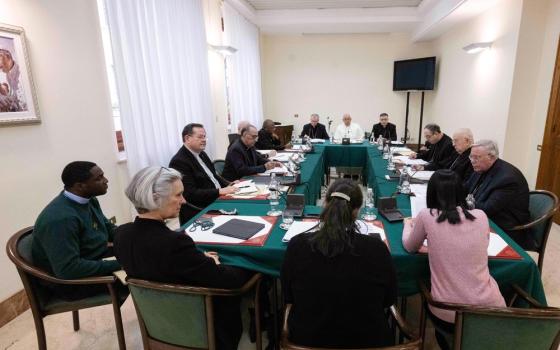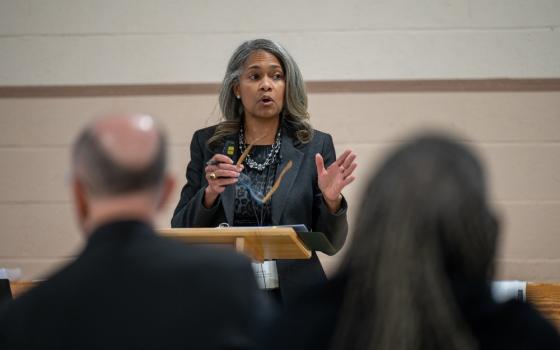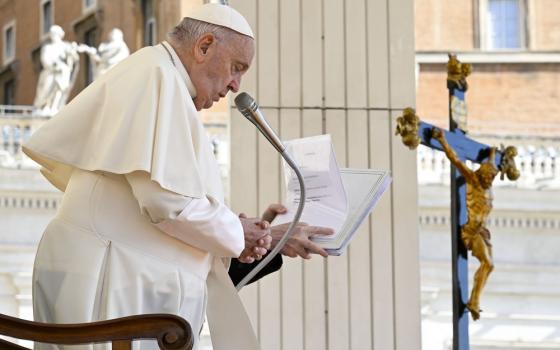Columban Missionary Fr. Sean McDonagh is attending the U. N. Climate Change conference in Copenhagen. He sent NCR this discussion on the issue of "Adaptation," a term widely used in the climate change debate, defined as the socioeconomic, institutional and cultural ability to adapt to the adverse effects of climate change.
An example of an adaptation strategy to prevent damage from climate change is shore protection (e.g., dikes, bulkheads, beach nourishment), which can prevent sea level rise from inundating low-lying coastal property, eroding beaches, or worsen flooding. If the costs or environmental impacts of shore protection are high compared with the property being protected, an alternative adaptation strategy would be a planned retreat, in which structures are relocated inland as shores retreat.
One possible outcome of the Copenhagen conference agreement will be the establishment of a worldwide Adaptation strategy and fund, a centralized pool of both financing and think-tank strategizing. As a member of a missionary order, Fr. McDonagh has been working on this issue for a long time.
"Last year at the Climate Change Conference in Poznan, Poland, I wrote an article about the importance of prioritizing the Adaptation Fund in any overall climate agreement. I made the point that reducing greenhouse gas emissions is the primary goal of the whole process. According to Article 2 of the U. N. Framework Convention on Climate Change (UNFCCC) the ultimate goal of the Convention is to achieve the “stabilization of greenhouse gas concentrations in the atmosphere at a level that would prevent dangerous anthropogenic interference with the climate system”.
However, it is important to remember that we are not talking about what may, or may not happen, in the future. In the 20th century average global temperatures increased by 0.74 degree Celsius, while sea level rise, resulting from both the thermal expansion of the ocean and melting of ice across the globe, amounted to 17 centimeters. Even with a relatively small increase, the Maldive Islands, several small islands states in the South Pacific and low-lying coastal nations such as Bangladesh, with lands surfaces barely a meter or two above sea level, would find that every storm and tidal surge represents a serious danger to human life. In fact, these areas may soon have to be abandoned by humans because they can no longer sustain human life.
So, Adaptation is designed to deal with the current and future casualties of climate change. From an ethical perspective it is about applying the moral principle that “the polluter must pay for the consequence of the pollution they cause.” Unless economically rich countries in Europe, North America, Japan, Australia and New Zealand and current major polluters such as China, India, Brazil and South Africa reduce greenhouse gas emissions within the next decade, then catastrophic climate change is almost inevitable and it will affect the poor more severely. Because Columbans are missionaries, much of our work on climate change is focused on the Adaptation measure because these will intimately affect people in many countries in which Columbans work, namely, Peru, Chile, Pakistan and the Philippines.
The Fourth Assessment Report from the Intergovernmental Panel on Climate Change (IPCC), was published in 2007, before the Bali Conference. One could summarize its finding with a few quotations from the document. It claimed that “Warming of the climate system is unequivocal as is now evident from observations of increases in global average air and oceans temperatures, widespread melting of snow and ice and rising global sea levels.” It goes on to link these changes with human activity, mainly the burning of fossil fuel to power our industrial economies, since the beginning of the industrial revolution,. “Most of the observed increase in temperatures since the mid-20th century is very likely due to the observed increase in anthropogenic greenhouse gas concentrations”.
Adaptation Fund received a lot of attention at both the Nairobi meeting of the UNFCCC in November 2006 and the Bali meeting in 2007. Disagreement centered around where the Fund would be located and how it would be managed. Economically rich countries wanted to have the Fund located in the IMF/World Bank complex, which would make it easier for them to control. This was anathema to many people from the South who suffered massive economic shocks as a result of the Third World Debt crisis in the 1980s and 1990s. Instead of attacking the banks that loaned the money or the governments that raised interest rates, the IMF/World Banks forced destructive Structural Adjustment Programmes (SAPs) that often crippled the education, health care and welfare systems of economically poor countries.
While the architecture of the Adaptation Fund was finally agreed at Bali, the main problem that Copenhagen has to tackle is simply that the needs are great and there is little money in the kitty. It is estimated that at least $100 billion annually will be needed by 2020.
A favorable outcome Copenhagen would involve: Firstly, a shared vision on Adaptation itself, which would take on board all aspects of the Bali Action Plan. This would mean a massive increase in designing Adaptation plans at the national and international levels. Secondly, rich countries must fulfill the promises they made 8 years ago to fully fund the actions which will address the immediate impact of climate change between now and 2012, when the Kyoto Protocol runs out. Thirdly, Adaptation funding must be new and additional to the Official Development Assistance (ODA) commitment of 0.7% of Gross Domestic Product (GDP) which the UN has called on all rich countries to make. The money must be delivered as grants and not as loans.



